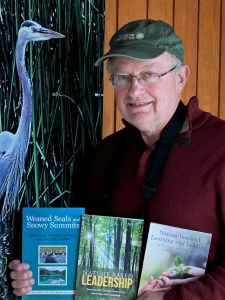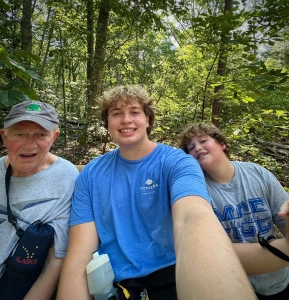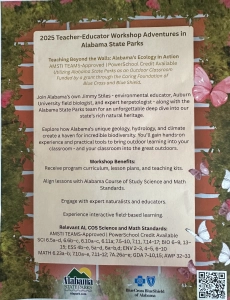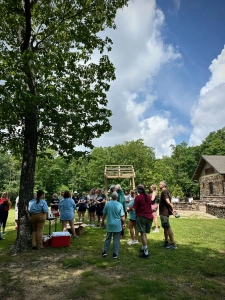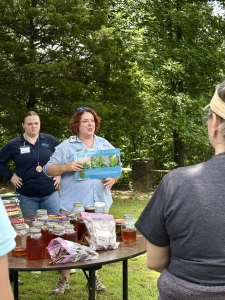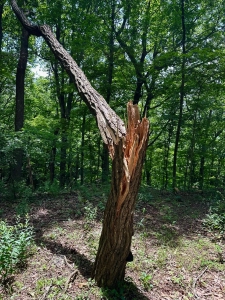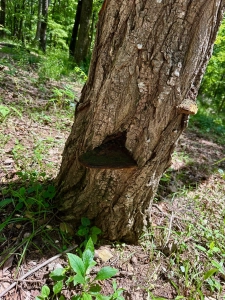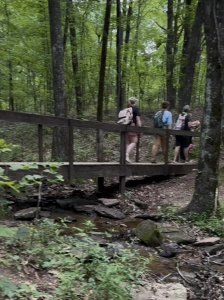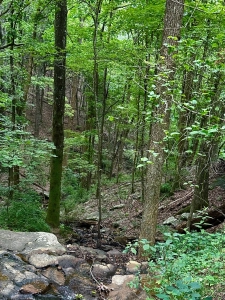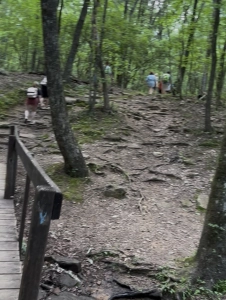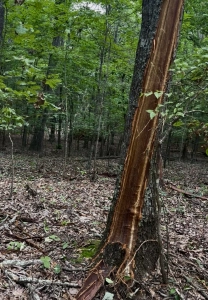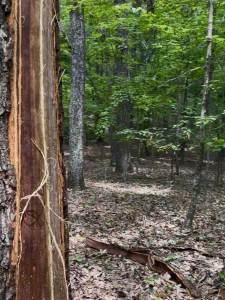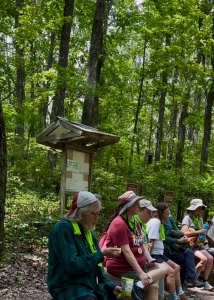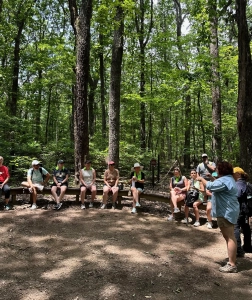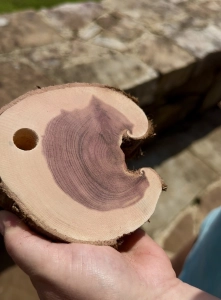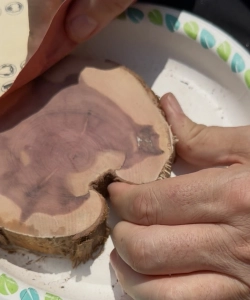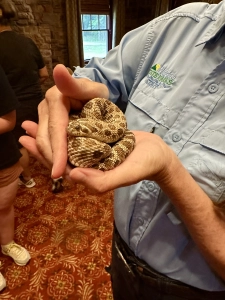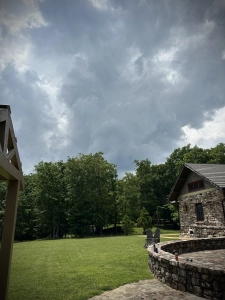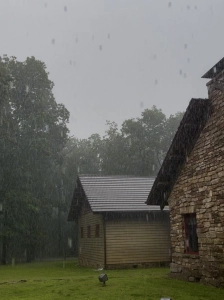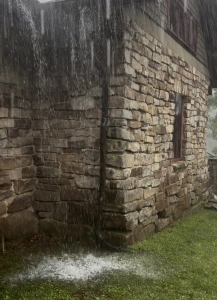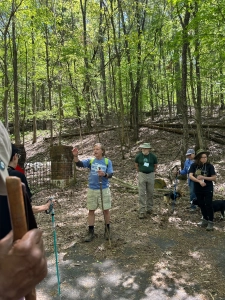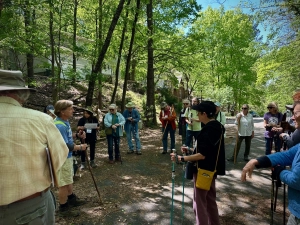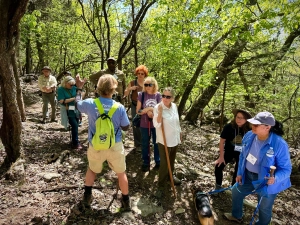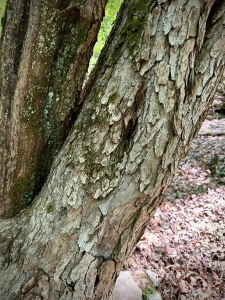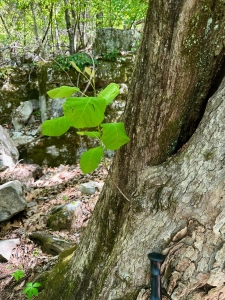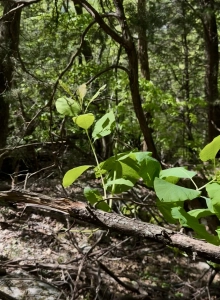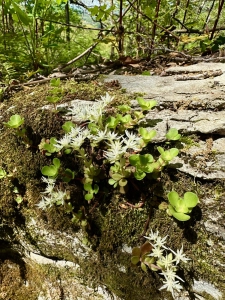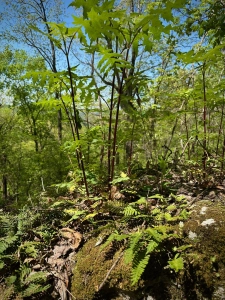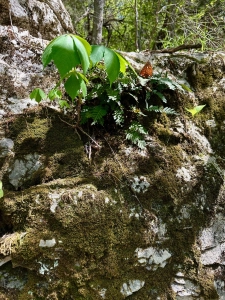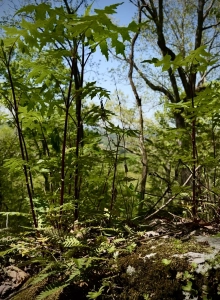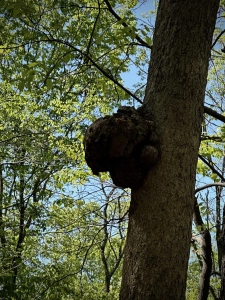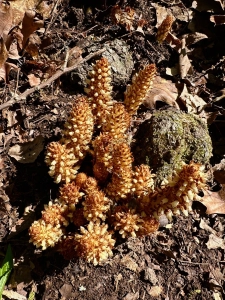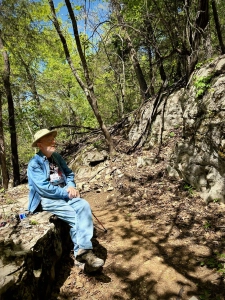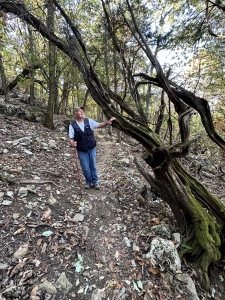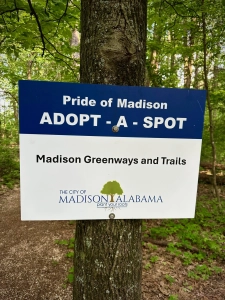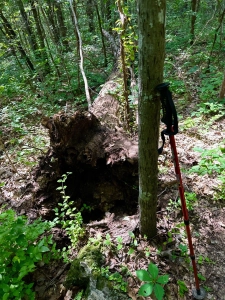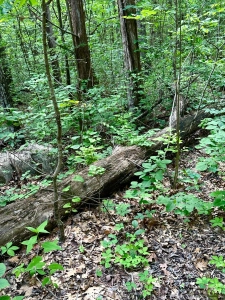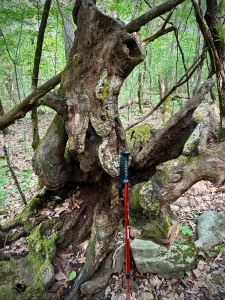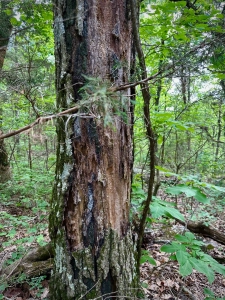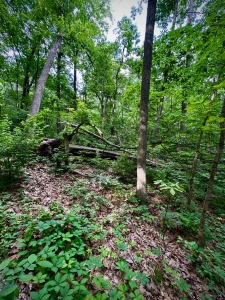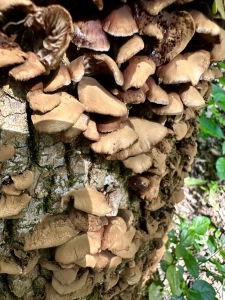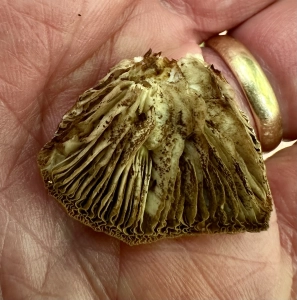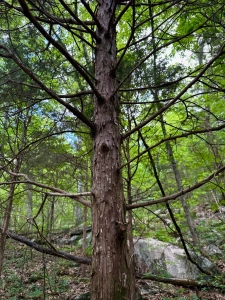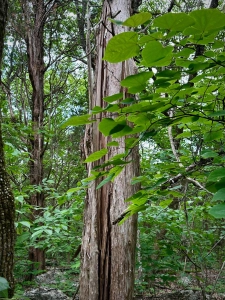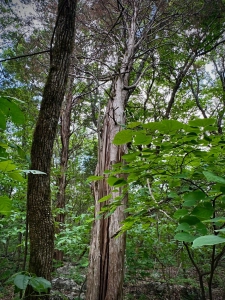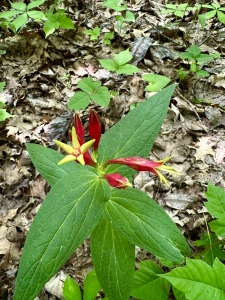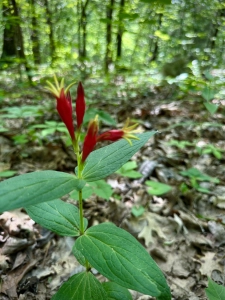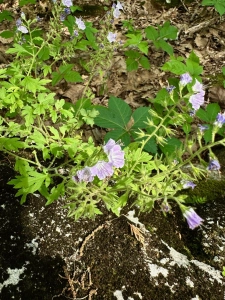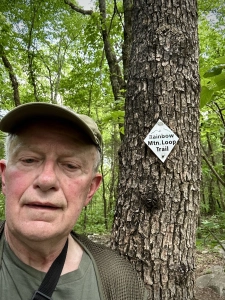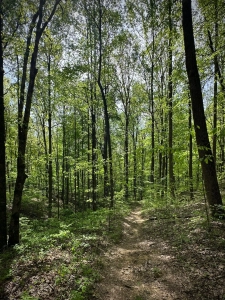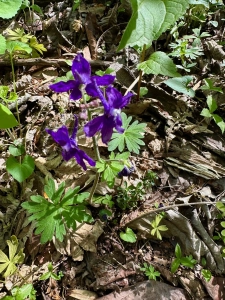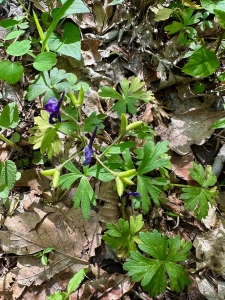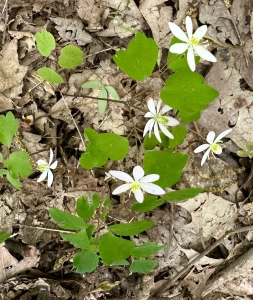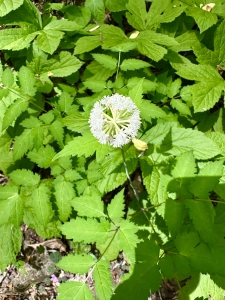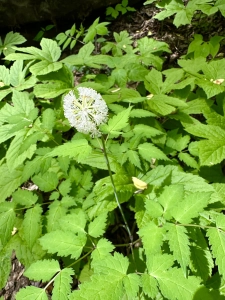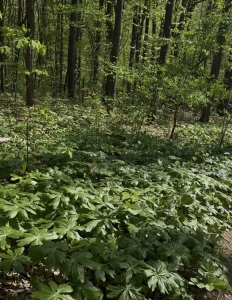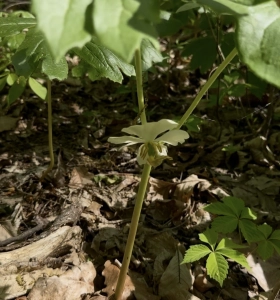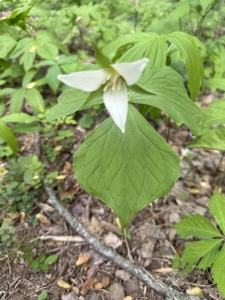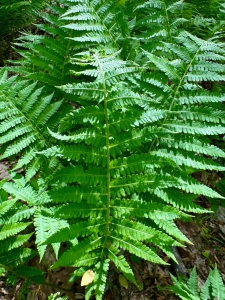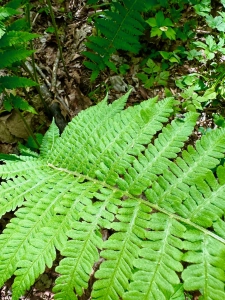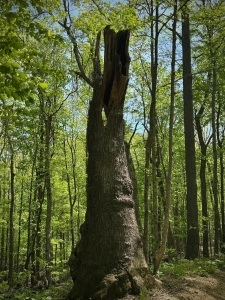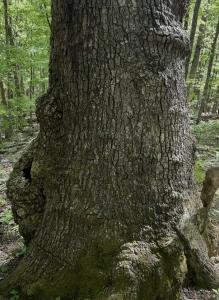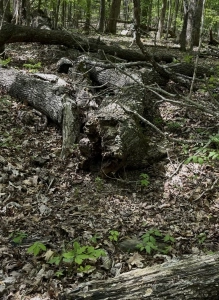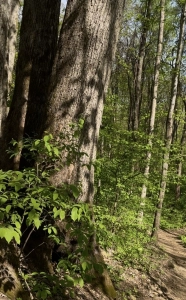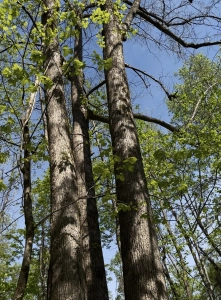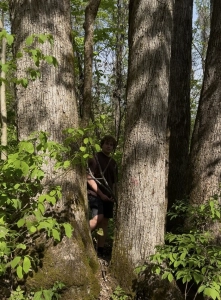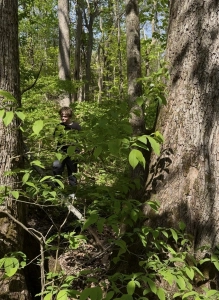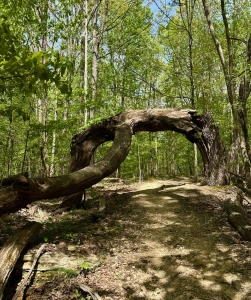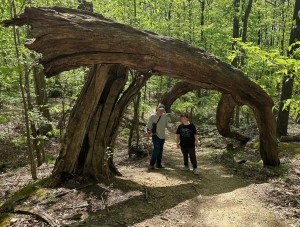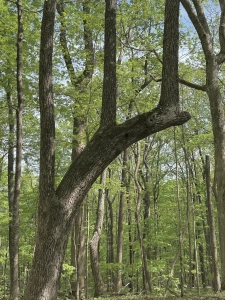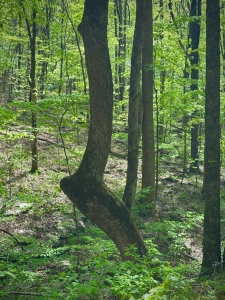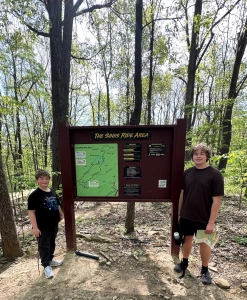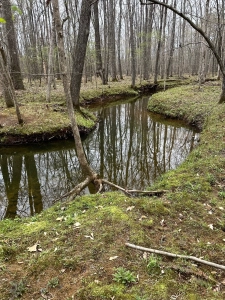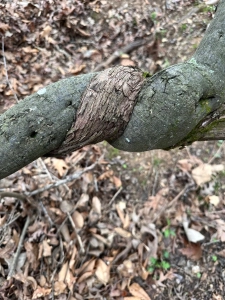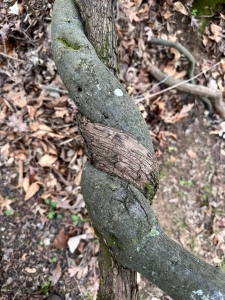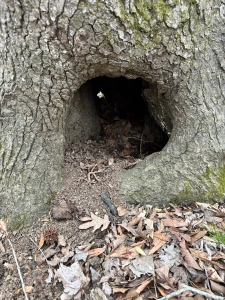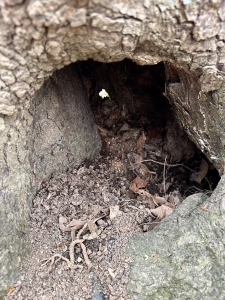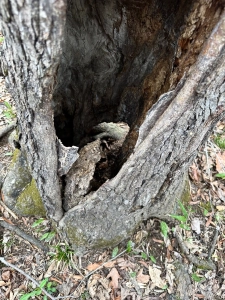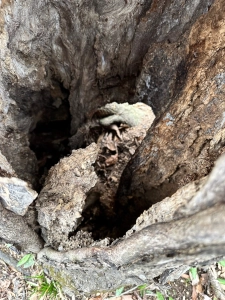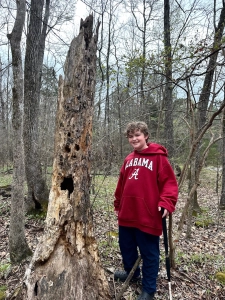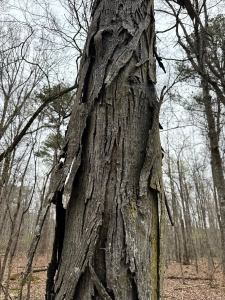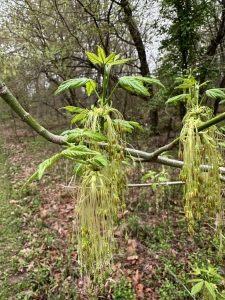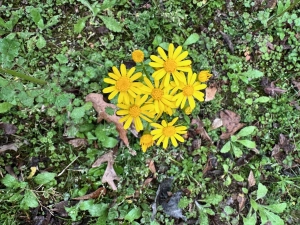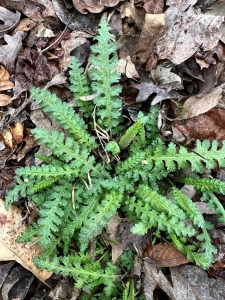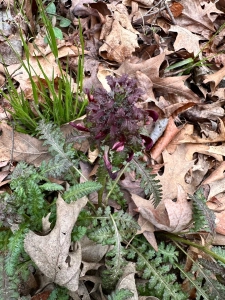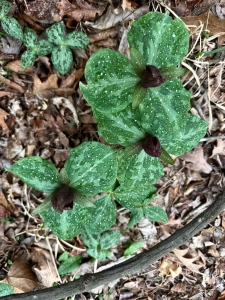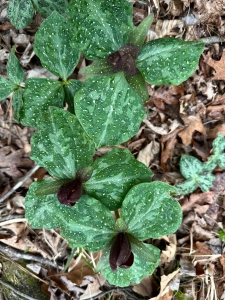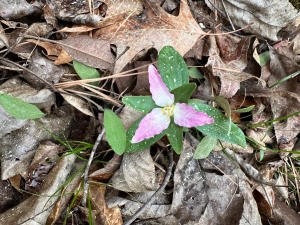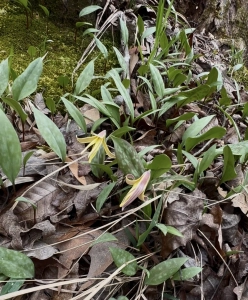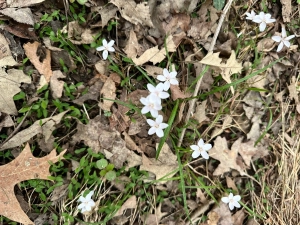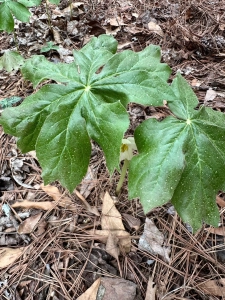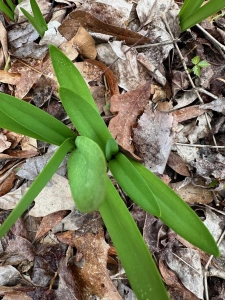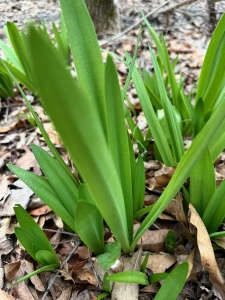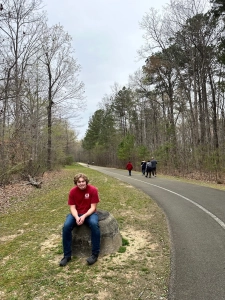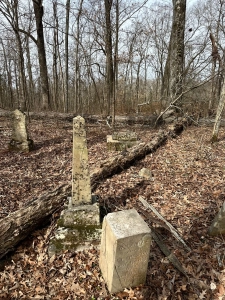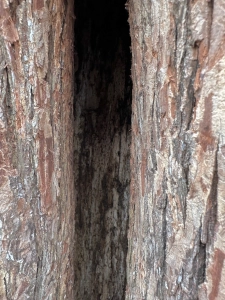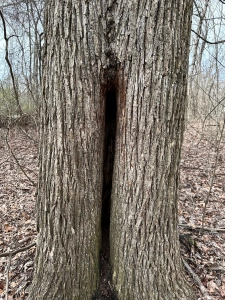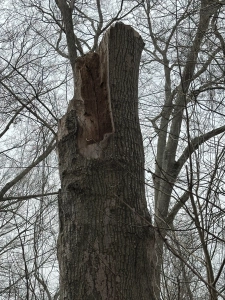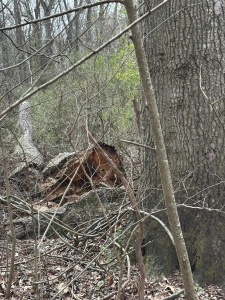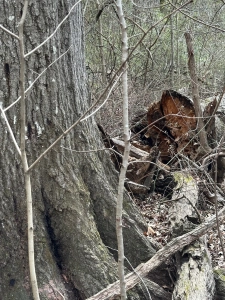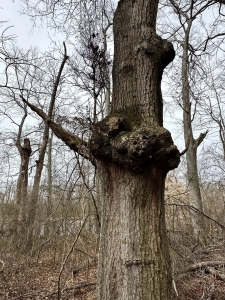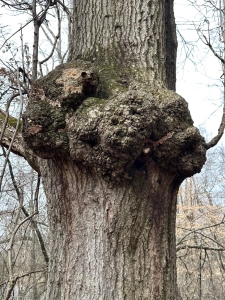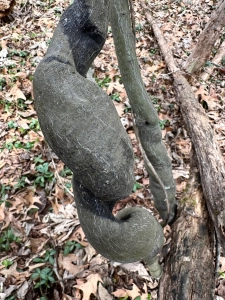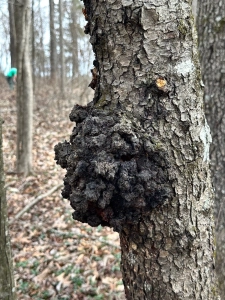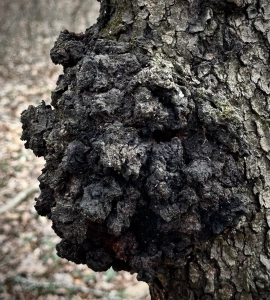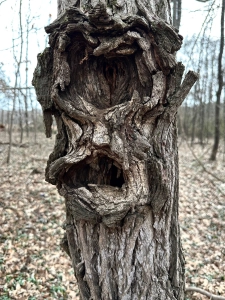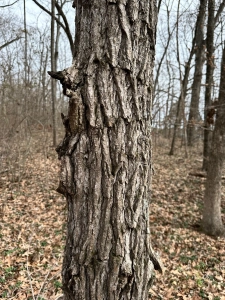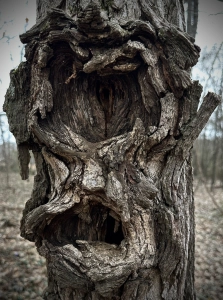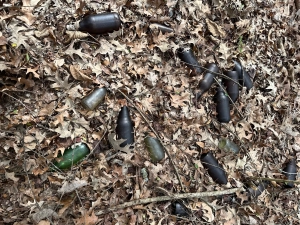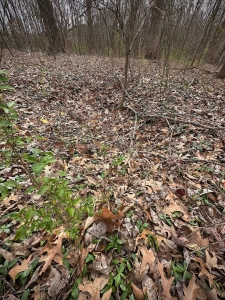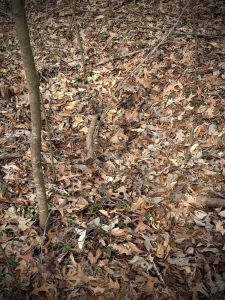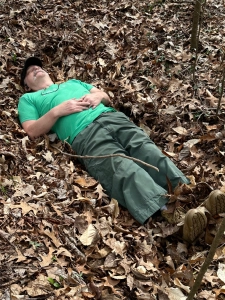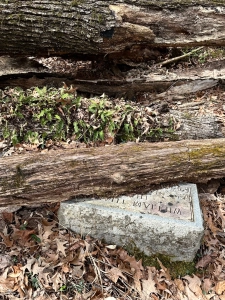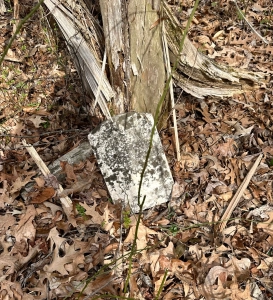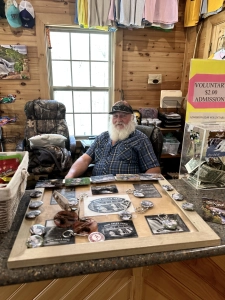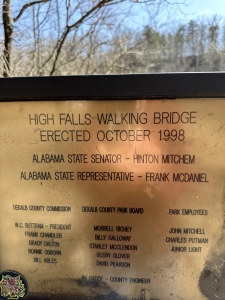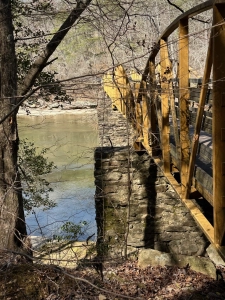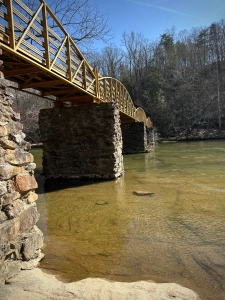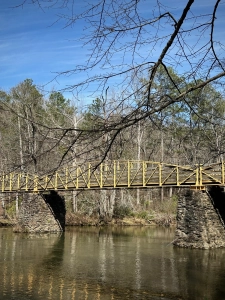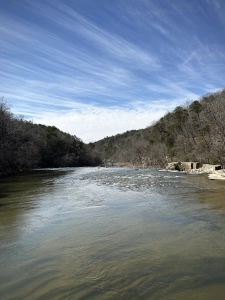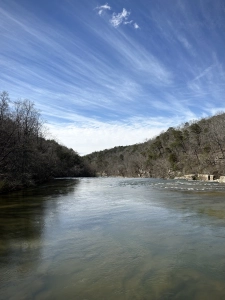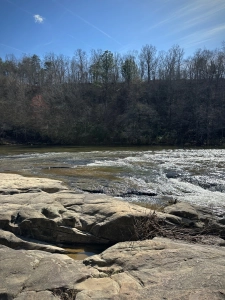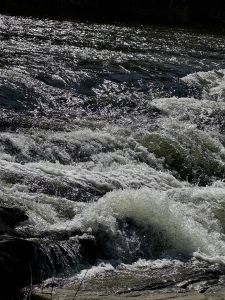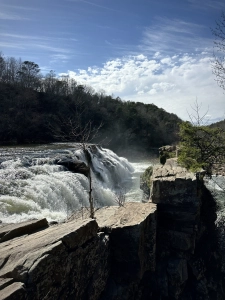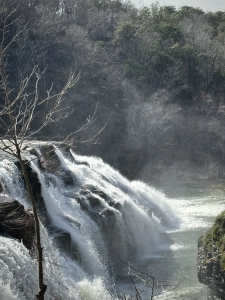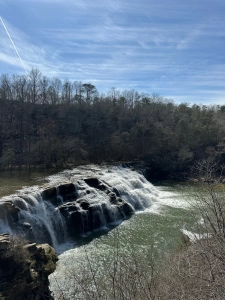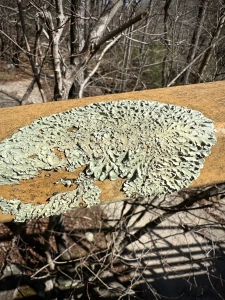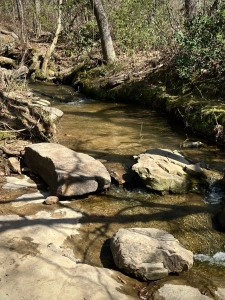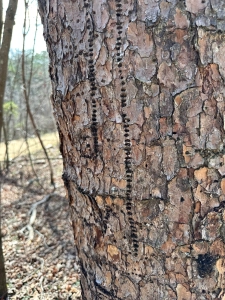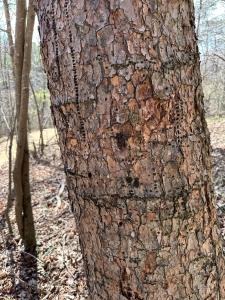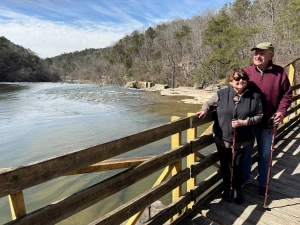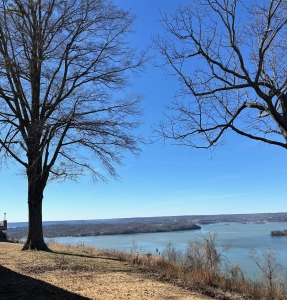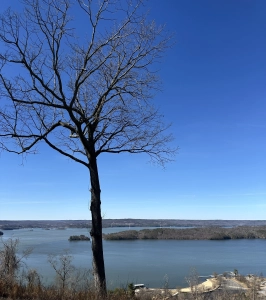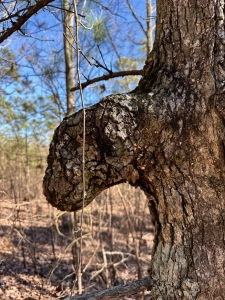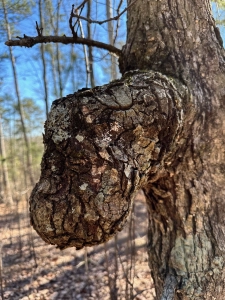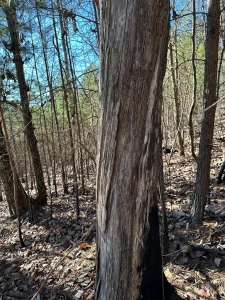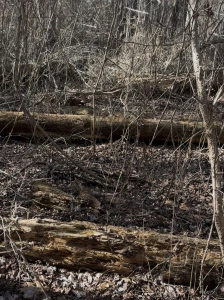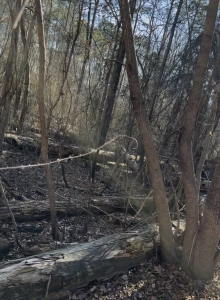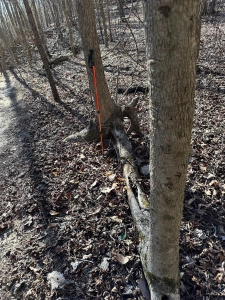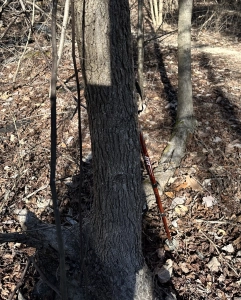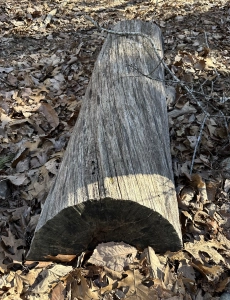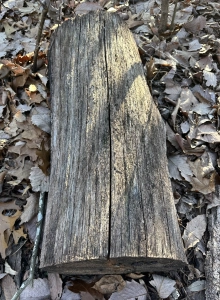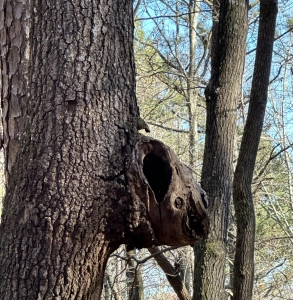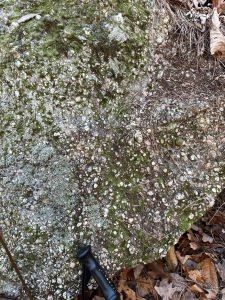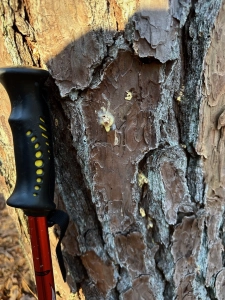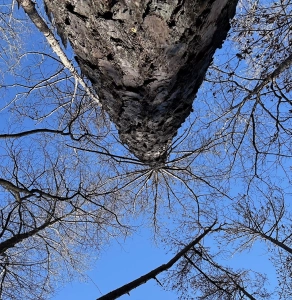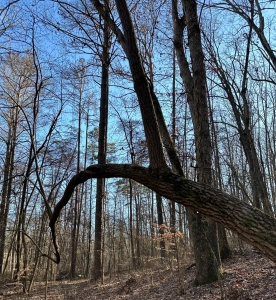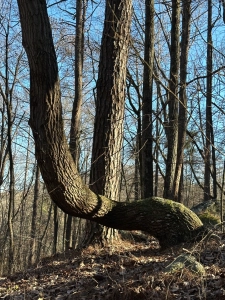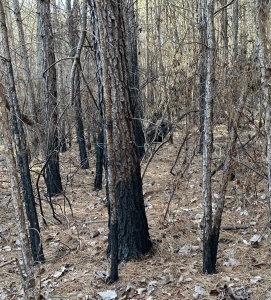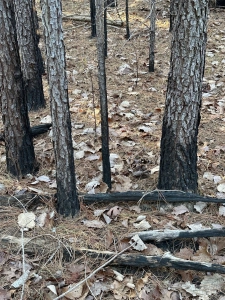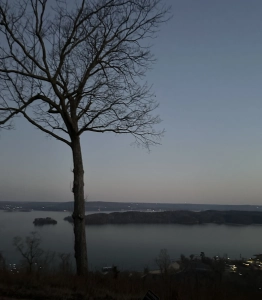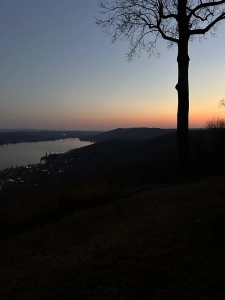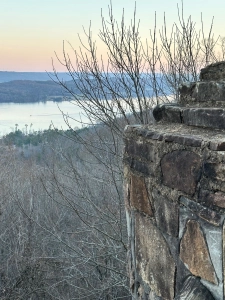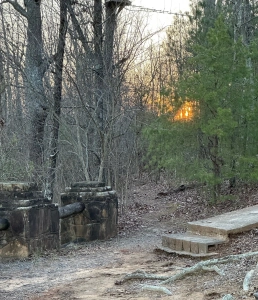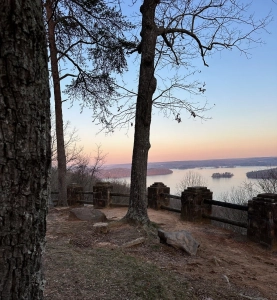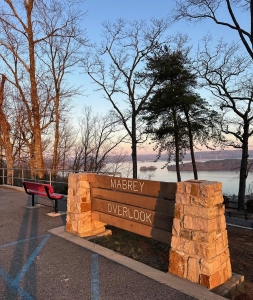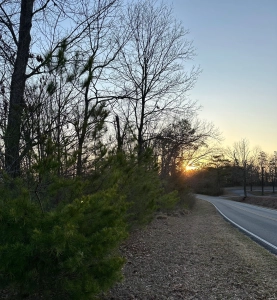A Return to the Alum Hollow Trail at North Alabama Land Trust’s Green Mountain Nature Preserve
34 photos and 6 videos
My two Alabama grandsons (Jack Disher, 17, and Sam Disher, 11) accompanied me on June 24, 2025, to the North Alabama Land Trust’s Green Mountain Nature Preserve. We explored the Alum Hollow Trail, where I was scheduled to lead a Land Trust Nature Hike on June 28, 2025. I wanted to scout the trail for features worthy of focus for the planned Land Trust nature venture. Most importantly, I treasure time in Nature with Jack and Sam. I want my passion for the natural world to live in them far beyond my fleeting time on this pale blue orb. Come along with me (and Jack and Sam) through observations, reflections, photos, and brief videos.
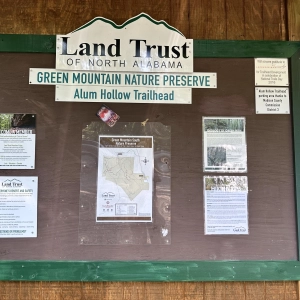
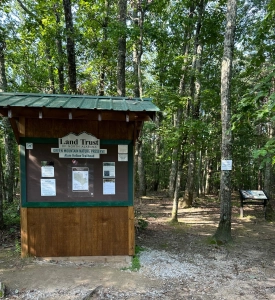
Four days later I led the Land Trust Hike with ten eager Nature enthusiasts.
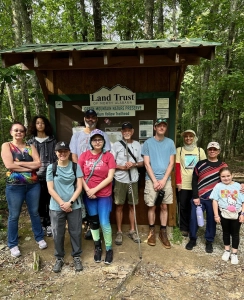
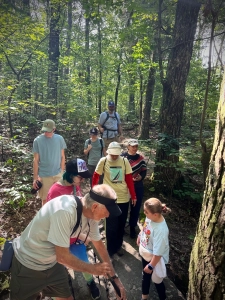
The trail is relatively flat along the 1,400 to 1,500 foot plateau top of Green Mountain. Mixed second-growth upland hardwood is the dominant forest cover, yet shortleaf (below) and Virginia pines occupy the WSW-facing ridge rim where the trail took us. I’ll say more about the preserve’s pine, represented here with a trail marker sign.
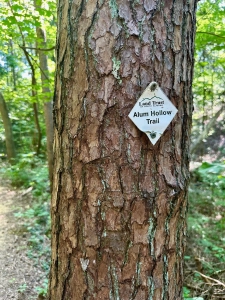
Every time I saunter along a forest trail I find magic, wonder, beauty, awe, and inspiration hidden in plain sight. The Alum Hollow Trail was no exception.
Notable Non-Tree Species
Vaccinium aboreum is a species new to me since retiring to Madison, Alabama in 2018. It’s the largest member of the blueberry genus. My fascination may or may not derive from its mirthful common names: farkleberry, sparkleberry, and winter huckleberry. An NC State University online Cooperative Extension publication describes this large vaccinium:
Sparkleberry is a small, deciduous to evergreen shrub or tree that may grow 10 to 20 feet tall. It can be found in rocky woodlands, sandy woodlands, and on cliffs. The leaves are alternate with a smooth or finely toothed margin. The bark is shredded and patchy with reds, browns, and grays present. In early summer, small, white, bell-shaped flowers mature. In the fall, this plant has excellent color. The tall shrub produces a black fruit that matures in the fall and is a good food source for wildlife.
It’s a tough lower-story shrub, seeming to prefer harsh dry sites. I admire it for thriving where more demanding species fear to tread.
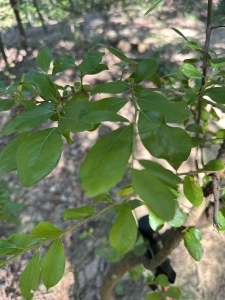
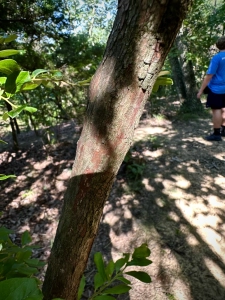
We found cedarglade St. John’s wort in flower. Also from an online NC State sourse:
St. John’s Wort is native to SE USA and in NC it is found in the western mountain areas. It is a small, dense shrub that grows 2-4 feet tall and wide with a rounded dense form. It inhabits glades and dry limestone ledges. The foliage may appear slightly bluish-green and is evergreen in its southern range. The showy yellow flowers are bright yellow with numerous stamens on new wood and appear in June-July.
Its foliage and yellow flower drew me in for a closer look.
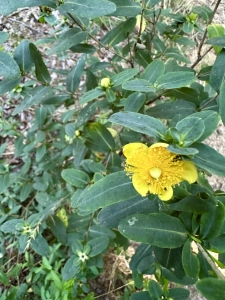
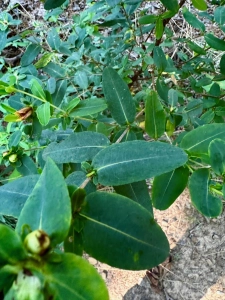
Greater tickseed is a member of the aster family and is found across Alabama from the Gulf coast to the Tennessee line. I love its whorled leaves.
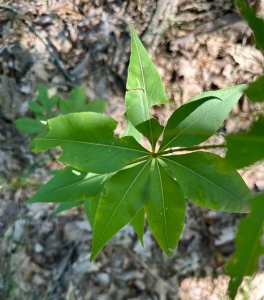
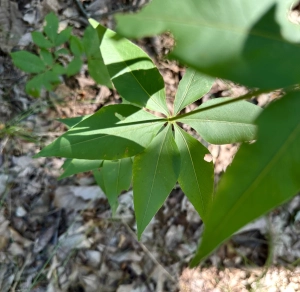
We feature hydrangea (oakleaf; endless summer; little lime) in our home landscaping. Near the falls the boys and I found wild hydrangea in full flower. Grandson Sam snapped these images.
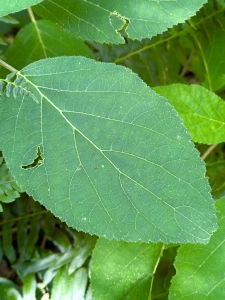
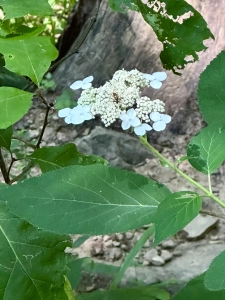
Although I missed seeing naked-flowered tic-trefoil with the boys, the Land Trust group oohed over its delicate pink blossoms. Note its tri-leaf (i.e. trefoil) foliage. The species is a Legume, a member of the pea family.
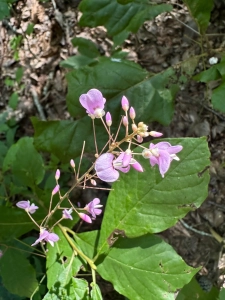
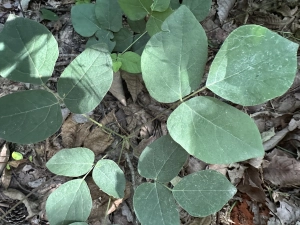
I had never asked Jack or Sam to record a brief interpretive video. They have heard me record many, when their role was to be quiet for a moment. I decided to give Sam a try. Without hesitation he recorded this 39-second sassafras identification lesson. He performed as though he’d done it a dozen times! Jack and I walked far enough away not to distract him. He needed only one take. I am grandfather-proud of the result — he may be catching the Nature bug!
We’ll hone his and Jack’s video artistry time and time again!
Selected Curiosities
My third book, Weaned Seals and Snowy Summits (co-authored with Dr. Jennifer Wilhoit), highlighted our passion for place and everyday Nature. The term everyday Nature is adequate but falls far short of sufficient. My eyes wander, seeking the unusual, the bizarre, oddities, and curiosities. I say that, yet I must confess that unusual, bizarre, odd, and curious are within the realm of everyday Nature. Nothing in Nature is strange; some things may be unexpected…but strange in Nature is commonplace!
A vividly green vine spiraling a pole-sized hickory tree may strike the uninformed as strange, but its not at all uncommon for a supplejack vine to have hitched a ride to the full sunlight of an upper story hickory.
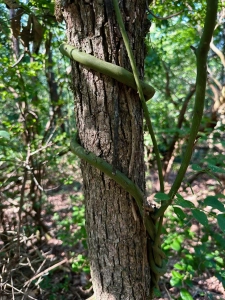
A large chestnut oak pointed ahead to the left as we progressed. Jack stood atop the tree’s crook. Some would opine confidently that Native Americans modified the then much smaller stem long ago to create an Indian Marker Tree. Sorry to disappoint, but some natural force (branch or fallen tree) clobbered the young erect tree, bending and breaking it about five feet above ground. The bend remains, supporting a new vertical stem that reaches into the main canopy. Nature’s primary life-imperative is to secure a pathway to immortality, whether me through Jack and Sam, or a crushed chestnut oak by way of an adventious bud sprouting a new shoot that reaches skward. The bridge to immortality extends through generations.
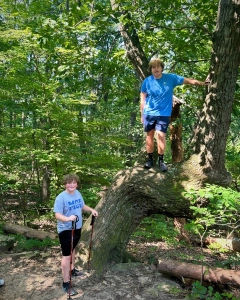
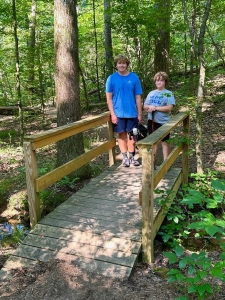
John Muir, too, spoke of immortality.
After a whole day in the woods, we are already immortal.
Nothing in Nature is static. A few weeks prior, this chestnut oak’s crown spread over one-fifth of an acre. One of its progeny may already be feeling the sunshine streaming in from the vacated canopy above. Adjacent trees will extend branches laterally to fill the void. The forest will persist even as individual trees succumb.
But in every walk with Nature one receives far more than he seeks. (John Muir)
I recorded this 59-second video of the fallen chestnut oak and a larger one standing regally nearby.
To many trail trekkers, a windthrown oak is merely an obstacle. To the trail maintenance crew…a task. To me, a prompt for mental wandering and contemplation. I wondered whether Native Americans traversed Green Mountain across their 13-15 millennia of occupation. How many times over those 140 centuries did a windblown chestnut oak bar their transit?
Southern Pine Beetle Outbreak
Summer 2024 was a banner year for southern pine beetle infestations across central and northern Alabama, killing thousands of acres of pine forests. Although upland hardwoods dominate the preserve, the Alum Hollow Trail passes through several hundred linear feet of mostly Virginia pine and, to a lesser extent, shortleaf pine. Beetle-killed pine trees posed a threat to trail users.
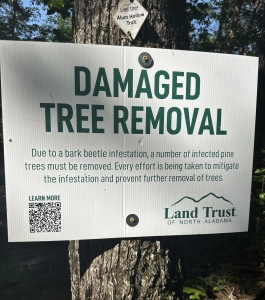
Land Trust crews felled dead trees. Jumbles of dead pine debris line the trail. Importantly, the forest persists. Species composition has changed. The piles of pinewood will decompose. Adjacent trees will reach into the crown opening; new stems will grow from the forest floor.
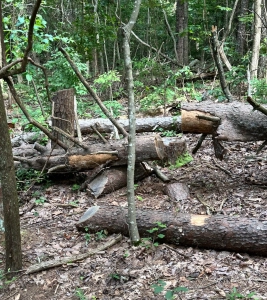
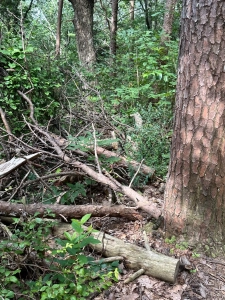
Sam found intrigue in a dead pine carcass recently fallen below the trail.
Curiosities and oddities are commonplace. Strange encounters are the norm to those sauntering and paying attention.
Fungi along the Alum Hollow Trail
Beetles belong to the animal kingdom; oak trees represent the plant kingdom; fungi are members of their own kingdom. Mushrooms are the spore producing reprodctive organs of fungi, which variously decay living organic matter, consume dead biomass, or grow symbiotically with living plants. I won’t go beyond that generalization. Go to the Blog page of my website (https://stevejonesgbh.com/blog/) and search for mushrooms, which will direct you to multiple photo essays focusing on my mushroom encounters. I give you below a few photos of fungi we found along the Alum Hollow Trail.
Coker’s amanita (Sam’s photos) is a common pure white gilled mushroom.
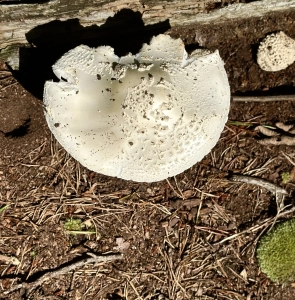
iNaturalist does a good job identifying mushrooms when given top, side, and underside photo views.
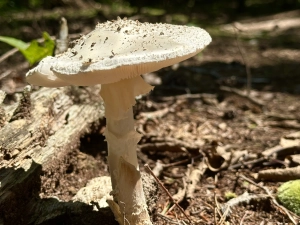
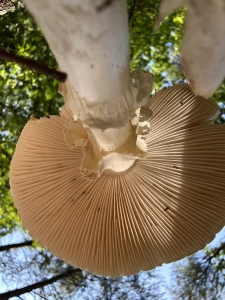
Red chanterelle (Sam’s photos) attracted us with their vivid laterns along the trail. A coarsely gilled edible mushroom genus, chanterelles are mycorrhiza fungi with mycelia growing within tree roots, benefitting both the tree and the fungus.
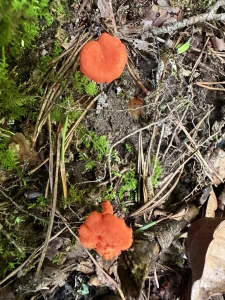
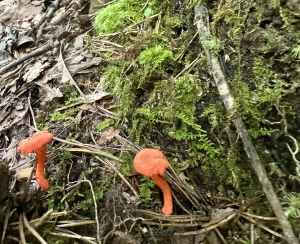
Flaming gold bolete, a member of a polypore (hollow tubes rather than gills) group common in northern Alabama.
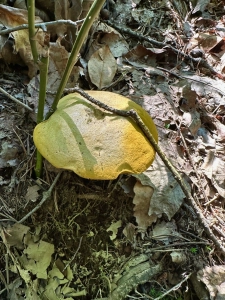
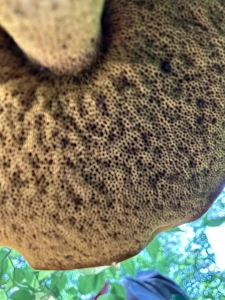
Some bolete species are mycorrhizal; other species are parasitic. Some are delectibly edible, while others are not table-worthy; distinguishing among species can be difficult. The boletes are not among the mushrooms I forage!
Alum Shelter and Waterfall
On both days, we turned at the waterfall and shelter.
I asked Jack to record a brief video at the falls. Like Sam, he performed well, recording this 25-second video.
I’ve seen the falls with greater flow, and I’ve visited with far less.
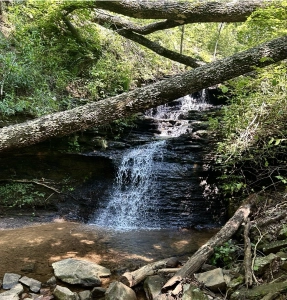
Uncertain of my ability to clamber down to the falls after my two 2024 total knee replacements, I recorded this 59-second video from the trail above the falls.
The Alum Cave is a misnomer. It’s a ledge overhang.
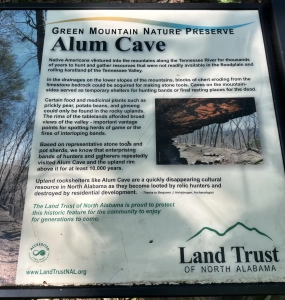
Protected from sunlight and rain, the shelter provides a pleasant spot for resting and reflecting.
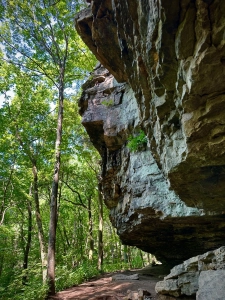
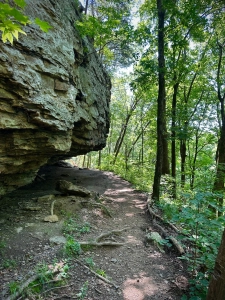
I recorded this 60-second video at the shelter.
A child of the central Appalachians, I feel at home in the preserve’s rugged terrain. Pausing at the shelter prompted me to step back six decades. Nature has a way of transporting me, physically, mentally, and spiritually!
A Final Critter
Although the final image in my photo essays, this eastern fence lizard greeted the Land Trust entourage early on our venture. I offer it in closing only because I did not concieve it as a good place to start.
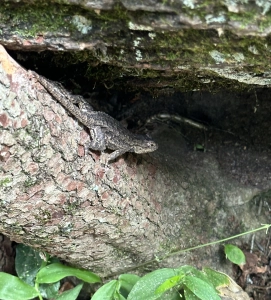
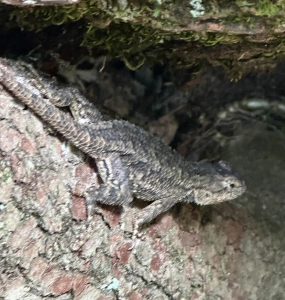
Thoughts and Reflections
I offer these observations:
- He who can no longer wonder and stand rapt in awe, is as good as dead, a snuffled-out candle. (Albert Einstein)
- The cycle of life is without end…as long as our sun shines, rain falls, and Earth remains otherwise inhabitable. (Steve Jones)
- Nothing in Nature is static, whether a mountain range or a northern Alabama upland forest. (Steve Jones)
Inhale and absorb Nature’s elixir. May Nature Inspire, Inform, and Reward you!
Note: Unless otherwise noted, all blog post images are created & photographed by Stephen B. Jones.
Please circulate images with photo credit: “©2025 Steve Jones, Great Blue Heron. All Rights Reserved.”
I am available for Nature-Inspired Speaking, Writing, and Consulting — contact me at steve.jones.0524@gmail.com
A reminder of my Personal and Professional Purpose, Passion, and Cause
If only more of us viewed our precious environment through the filters I employ. If only my mission and vision could be multiplied by untold orders of magnitude:
Mission: Employ writing and speaking to educate, inspire, and enable readers and listeners to understand, appreciate, and enjoy Nature… and accept and practice Earth Stewardship.
Vision:
- People of all ages will pay greater attention to and engage more regularly with Nature… and will accept and practice informed and responsible Earth Stewardship.
- They will see their relationship to our natural world with new eyes… and understand their Earth home more clearly.
Tagline/Motto: Steve (Great Blue Heron) encourages and seeks a better tomorrow through Nature-Inspired Living!
Steve’s Four Books
I wrote my books Nature Based Leadership (2016), Nature-Inspired Learning and Leading (2017), Weaned Seals and Snowy Summits: Stories of Passion for Place and Everyday Nature (2019; co-authored with Dr. Jennifer Wilhoit), and Dutton Land & Cattle: A Land Legacy Story (2025) to encourage all citizens to recognize and appreciate that every lesson for living, learning, serving, and leading is either written indelibly in or is powerfully inspired by Nature. All four of my books present compilations of personal experiences expressing my deep passion for Nature. All four books offer observations and reflections on my relationship with the natural world… and the broader implications for society. Order any from your local indie bookstore, or find them on IndieBound or other online sources such as Amazon and LifeRich.
I began writing books and Posts for several reasons:
- I love hiking and exploring Nature
- I see images I want to (and do) capture with my trusty iPhone camera
- I enjoy explaining those images — an educator at heart
- I don’t play golf!
- I do love writing — it’s the hobby I never needed when my career consumed me
- Judy suggested my writing is in large measure my legacy to our two kids, our five grandkids, and all the unborn generations beyond
- And finally, perhaps my books and Blogs could reach beyond family and touch a few other lives…sow some seeds for the future
